Key Takeaways
- Understanding the functionality of spreaders and their importance in lawn care.
- Different types of spreaders: drop and broadcast spreaders.
- Choosing the right grass seed for your lawn.
- Comparison of top spreaders
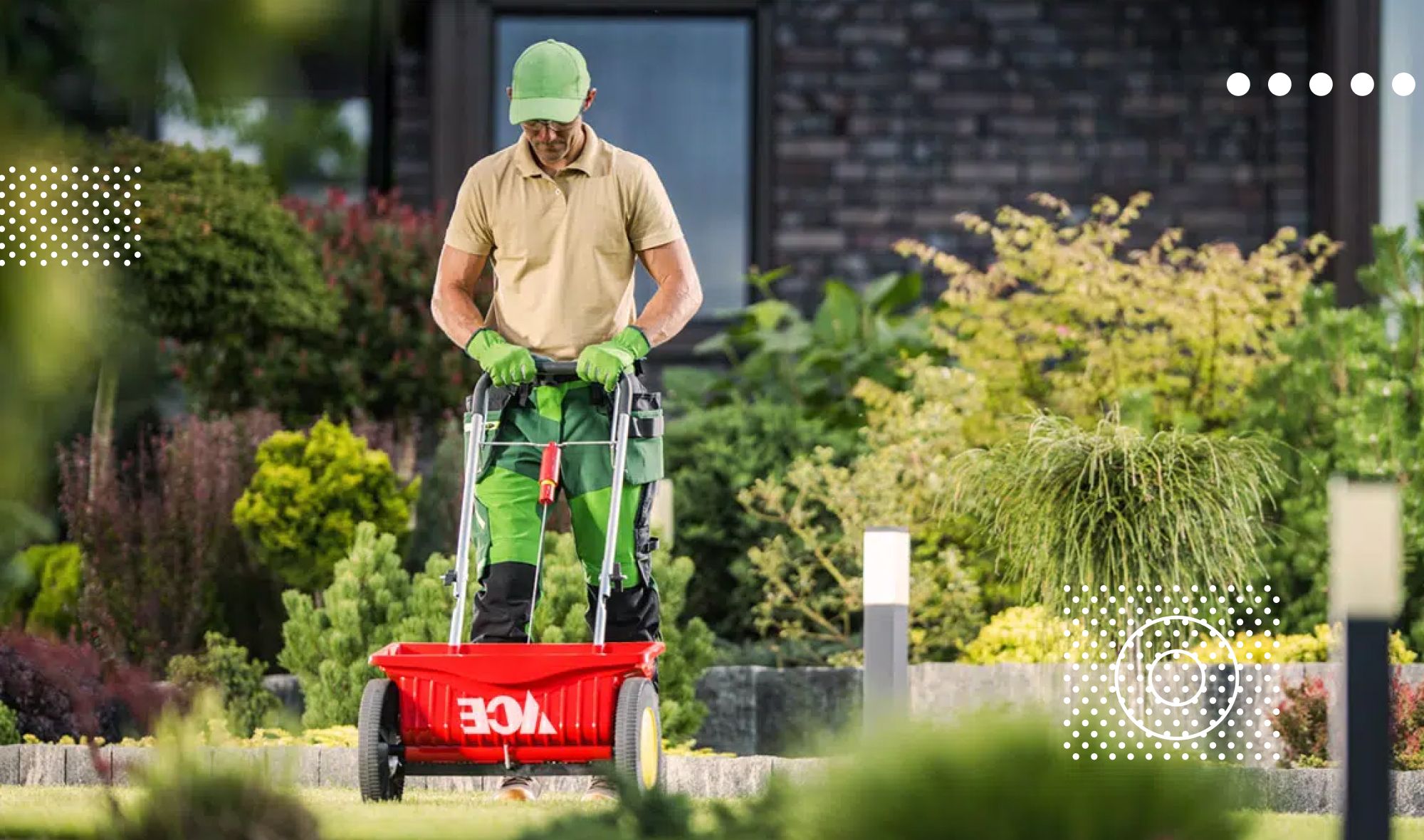
If you've ever marveled at your neighbor's lush, vibrant lawn and wondered how they achieved such a feat, you're not alone. The key to a healthy and attractive lawn isn't just about watering or cutting grass at the right height, but often lies in using the right tools. And a key player in this toolset is the spreader. Whether it's a seed spreader, a fertilizer spreader, or a combination of both, these handy tools can make a world of difference in how your lawn looks and feels.
Spreaders aren't a one-size-fits-all solution, though. There are various types, from drop spreaders and broadcast spreaders to push spreaders and even handheld models. Each type comes with its unique benefits, which we'll explore in this comprehensive guide. Alongside this, we will delve into some of the best fertilizer spreaders on the market, and help you understand why they've become an essential part of lawn care services.
Whether you're looking to rejuvenate a patchy lawn, control the spread of grass seed, or simply make your yard the envy of the neighborhood, our detailed look at spreaders will help you on your search. Stick around for additional information on how to select the right spreader for your needs, tips on achieving the optimal coverage area, and a lot more.
No matter the size of your lawn, from compact yards to large areas needing a tow behind your tractor or ATV, having the right spreader makes all the difference. Let's dive in to get your lawn looking its best.
Join our newsletter
Stay on top of the latest in landscaping and lawn care with one valuable tip right in your inbox every Saturday morning.
Understanding the Basics: What is a Spreader?
A spreader is an essential lawn care tool that provides a practical, efficient method to distribute seeds, fertilizer, and other materials evenly across your lawn. You might also find it useful when spreading ice melt on your driveway and sidewalks during the winter months.
The primary function of a spreader is to ensure an even distribution of material, eliminating the risk of over or under-application. This uniform spread contributes significantly to maintaining a lush, healthy lawn, preventing patchy growth or burn spots caused by excessive fertilizer.
Now, you might be thinking: "How does a spreader work?" It's quite simple. The spreader holds your seeds or fertilizer in a bin, also known as a hopper. As the wheels rotate, they engage a mechanism that allows the material to be released onto your lawn. The rate of spread can be controlled, allowing for precision in application.
There are two primary types of spreaders: drop spreaders and broadcast (or rotary) spreaders. Drop spreaders release the material directly below, ensuring a precise application but covering less area. On the other hand, broadcast spreaders spread the material in a wide arc, giving a broad coverage area but with less precision.
There are also different models, such as push spreaders, tow spreaders that can be attached to a tractor for large areas, and handheld spreaders, perfect for smaller lawns or specific spots.
Selecting the right spreader largely depends on your lawn's size, the type of material you're spreading, and your level of precision required. So, when you're in search of that ideal spreader, you'll want to keep these factors in mind. But don't worry, we'll delve into the details of how to choose the perfect spreader for your needs in the coming sections.
Whether you're sowing grass seed in the spring or spreading ice melt on your driveway in the winter, having the right spreader can make your task a lot more manageable. So let's take a closer look at the types of spreaders available and how they can help you maintain a lush, beautiful lawn.
To learn more about overseeding in spring and how it can help rejuvenate your lawn, check out our detailed guide on overseeding in spring.
Types of Spreaders for Your Lawn

When it comes to selecting a spreader for your lawn, understanding the different types available can make your decision easier. Primarily, spreaders fall into two main categories: drop spreaders and broadcast (or rotary) spreaders. Additionally, there are handheld spreaders and tow-behind spreaders, each with their unique advantages.
Drop Spreaders
A drop spreader, as the name implies, drops the material directly beneath it. It is perfect for precise applications, such as along flower beds or walkways, where you don't want seeds or fertilizer to land. Drop spreaders ensure that the material is spread exactly where you want it, with little to no wind interference.
This type of spreader is often used for smaller lawns due to its precision but limited coverage area. When using a drop spreader, make sure to overlap your passes to avoid leaving any stripes where the spreader didn't cover.
Broadcast Spreaders
On the other hand, a broadcast spreader, also known as a rotary spreader, operates by throwing the material out in a broad arc. It offers a larger coverage area, making it an excellent choice for larger lawns. However, it lacks the precision of a drop spreader, which means it's less suitable for tight or detailed work around flower beds and driveways.
Broadcast spreaders also come in various models, including push spreaders and tow-behind spreaders that can be attached to a tractor or an ATV, making them ideal for large areas.
Handheld Spreaders
Handheld spreaders are compact, easy to store, and perfect for small lawns or areas that need a quick touch-up. They're the most portable type of spreaders, and they allow you to control precisely where the material is spread. You simply load the material into the hopper and turn the handle to distribute the seeds or fertilizer.
Tow-Behind Spreaders
Finally, tow-behind spreaders are designed for extensive lawns. As the name suggests, these spreaders are attached to a tractor or ATV and towed behind. They have a large capacity hopper, allowing you to cover a substantial area without needing to refill constantly.
Each type of spreader brings its unique strengths to the table. Depending on the size of your lawn, the type of material you're spreading, and the degree of precision you need, you may find one type more suited to your needs than the others.
Understanding these differences will help you make an informed decision on the right spreader for your lawn. Now, let's take a look at the best fertilizer spreaders available on the market.
Fertilizer Spreaders: An Essential Tool for Lawn Care

Maintaining a healthy, vibrant lawn requires more than just regular watering and mowing. One of the key aspects of lawn care is fertilization, and a fertilizer spreader is the tool that makes this task efficient and effortless.
A fertilizer spreader is specifically designed to evenly distribute fertilizers across your lawn. The aim is to supply the grass with the nutrients it needs to grow lush and green, while preventing over-fertilization that could potentially damage your yard. Fertilizers are typically spread in granular form, and a good spreader ensures these granules are distributed uniformly.
Fertilizer spreaders come in various types - drop spreaders, broadcast or rotary spreaders, handheld spreaders, and tow-behind spreaders, each catering to specific needs and lawn sizes. For instance, if you have a small to medium-sized lawn with lots of flower beds and you want to apply fertilizer accurately, a drop spreader might be your tool of choice. On the other hand, for large open lawns, a tow-behind broadcast spreader attached to a tractor or an ATV could be more efficient.
Beyond fertilization, these versatile tools can also distribute grass seed, pesticides, and even ice melt during the winter months. This multi-functionality makes fertilizer spreaders a year-round companion for your lawn care needs.
The choice of fertilizer spreader also depends on the granule size of the material you're spreading. Some spreaders may not be suitable for large or unusually shaped granules, so it's essential to consider this when selecting a spreader.
Fertilizer spreaders make the task of lawn fertilization simple and precise, removing the guesswork and ensuring your grass gets the exact nutrients it needs to thrive. Regardless of your lawn size or your level of gardening expertise, there's a fertilizer spreader out there that can help make your lawn care routine more efficient. Now that we've covered the importance and functionality of fertilizer spreaders, let's look at some of the best ones available in the market today.
Seed Spreaders: Promoting Lawn Growth and Rejuvenation

Just as a painter needs a brush to create art, a gardener needs a seed spreader to cultivate a beautiful, lush lawn. Seed spreaders, as their name implies, are designed to disperse seeds evenly across your lawn. They play an essential role in promoting grass growth and revitalizing your yard.
A seed spreader is especially handy when you're looking to establish a new lawn or rejuvenate an existing one. By ensuring a uniform distribution of grass seed, a spreader helps avoid areas of over- or under-seeding, leading to a more consistent and healthier lawn. It's a tool that aids in the creation of the ideal conditions for grass seed germination, enabling your lawn to grow lush and green.
Similar to fertilizer spreaders, seed spreaders also come in various types: drop, broadcast (or rotary), handheld, and tow-behind. Each of these has its advantages, depending on the size of your lawn and the level of precision required.
For instance, if you're sowing grass seed in a small to medium-sized lawn or a specific area of your yard, a drop spreader would provide the precision you need. However, for larger lawns or when quick application is required, a broadcast or a tow-behind spreader can cover a large area more efficiently.
Using a seed spreader is fairly straightforward. You simply load your grass seed into the hopper, adjust the spread rate according to the instructions provided with your seed or spreader, and then start spreading. As you move, the spreader applies the seeds evenly across your lawn, covering the desired area with minimal effort.
A good seed spreader can make your lawn care routine more efficient and effective, leading to better growth and rejuvenation of your yard. Whether you're starting a new lawn, overseeding an existing one, or just filling in a few bare spots, there's a seed spreader that can make the job easier. Up next, we'll be comparing some of the best fertilizer spreaders in the market to help you choose the right one for your needs.
Grass Seed: The Backbone of a Healthy, Lush Lawn
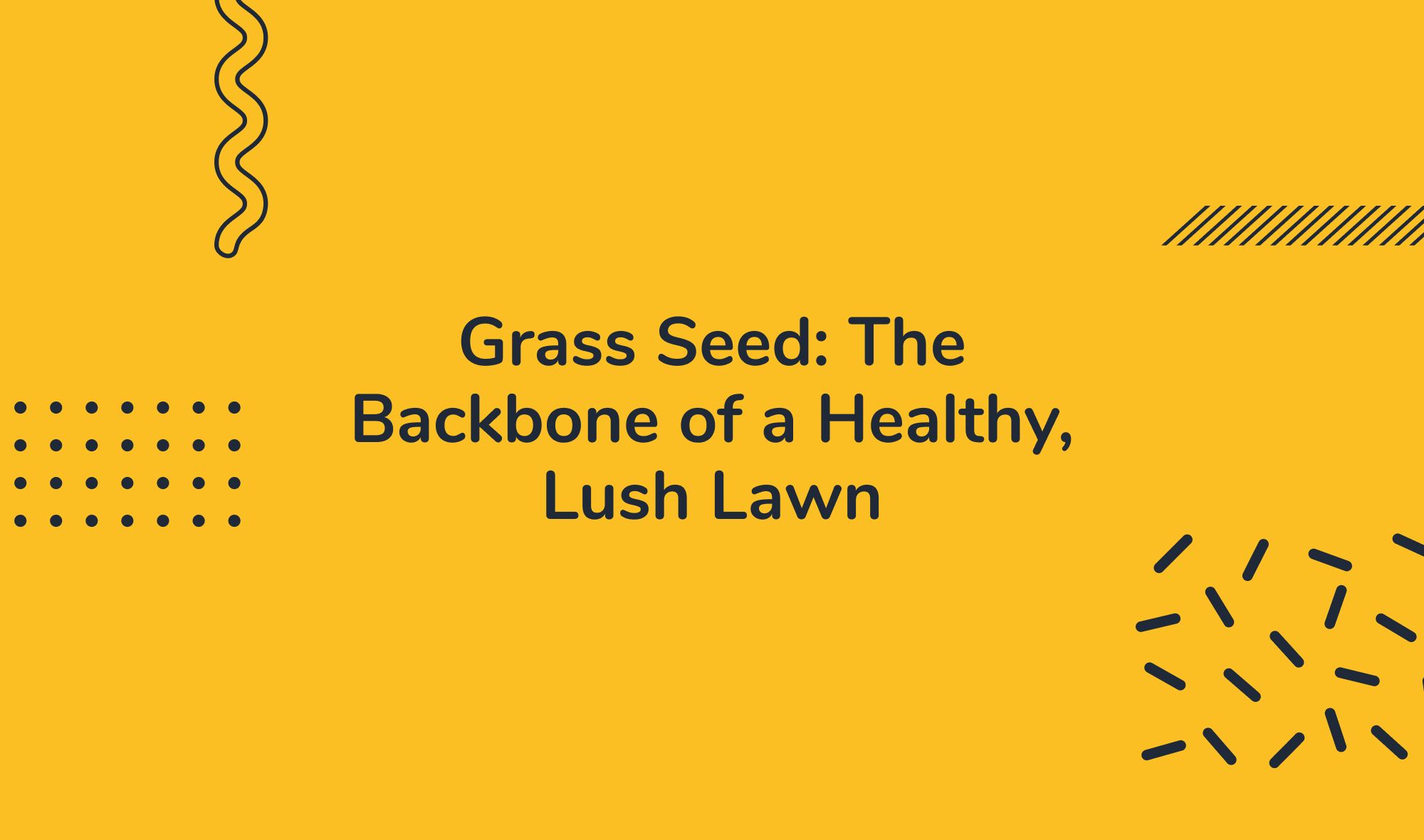
While having the right tools like a seed or fertilizer spreader is essential for maintaining a healthy lawn, the foundation of a thriving yard is the quality of the grass seed you choose. It's the backbone of a lush, green lawn and understanding the different types available and their unique characteristics can significantly impact your lawn's health and appearance.
The Importance of Quality Grass Seed
Grass seed is critical in establishing new lawns, repairing damaged spots, and promoting thicker growth in existing yards. A quality grass seed ensures your lawn grows in evenly, helps crowd out weeds, and withstands varying weather conditions.
The different types of grass seeds have varied growth rates, resilience to heat or cold, resistance to drought or waterlogging, and different appearances. Therefore, when choosing the right grass seed, it's crucial to consider your local climate, the specific conditions of your yard (like the amount of sunlight it gets), and the kind of aesthetic you're aiming for.
Types of Grass Seeds
The primary types of grass seeds include cool-season grasses and warm-season grasses.
- Cool-Season Grasses - These grasses thrive in cooler temperatures and are generally planted in late summer or early fall. They include species such as Kentucky Bluegrass, Fescues, and Ryegrass. Cool-season grasses have a high tolerance for cold temperatures and are commonly used in northern regions of the U.S.
- Warm-Season Grasses - Warm-season grasses, such as Bermuda grass, St. Augustine grass, and Zoysia grass, thrive in hot summer weather. They are usually planted in late spring and are ideal for southern regions where temperatures are typically high.
Choosing the Best Grass Seed for Your Lawn
To choose the best grass seed for your lawn, you need to consider a few factors:
- Climate - Choose a grass type that can thrive in your local weather conditions.
- Soil Type - The soil in your lawn can also dictate which type of grass seed is best. Some grasses prefer sandy soil while others prefer clay or loam.
- Sunlight - How much sunlight does your lawn receive? There are grass seeds for full sun, partial shade, and even deep shade.
- Maintenance - How much time are you willing to invest in lawn care? Some grasses require more upkeep than others.
By selecting the right grass seed and using a quality seed spreader to distribute it evenly across your lawn, you're setting the stage for a lush, healthy lawn that will be the envy of your neighbors. In our next section, we'll compare the best fertilizer spreaders in the market to help you ensure that your grass seed gets the nutrients it needs to grow strong and beautiful.
If you want to learn more about choosing the best Bermuda grass seed, check out our in-depth guide on Choosing The Best Bermuda Grass Seed.
Selecting the Perfect Spreader for Your Lawn

When it comes to lawn care, having the right tools makes a world of difference, and choosing the perfect spreader for your needs is no exception. A spreader is more than just a tool; it's an investment in your lawn's health and beauty. Here are some key factors you should consider when selecting a spreader for your lawn.
Lawn Size and Shape
The size and shape of your lawn play a pivotal role in deciding the type of spreader you need. For small to medium-sized lawns or yards with tight corners and intricate landscaping, a drop spreader offers precision and control. Conversely, a broadcast or rotary spreader is best for large open areas as it covers a wide swath with each pass, making the job quicker and easier.
Material to Be Spread
Whether you're spreading grass seed, fertilizer, or ice melt, it's important to choose a spreader that can handle the specific material. Some spreaders may struggle with large or oddly shaped granules, so ensure your chosen spreader can accommodate the material you intend to use.
Capacity
Consider the capacity of the spreader's hopper. A larger hopper means fewer refills, which can be a significant advantage when treating large areas. But remember, a larger hopper will also make the spreader heavier when full, so balance capacity with ease of use.
Ease of Use and Maintenance
Choose a spreader that's comfortable and easy to use. Look for features like an adjustable handle, easy-to-read settings, and a mechanism to control the spread rate. It's also crucial to select a spreader that's easy to clean and maintain, as residue can corrode parts and impact performance over time.
Durability
Look for a sturdy, well-constructed spreader that can stand up to the rigors of lawn care. High-quality materials and rust-resistant coatings can help ensure your spreader lasts for several seasons.
Reviews and Recommendations
Lastly, take the time to read reviews and seek recommendations. Hearing from others who have used the spreaders you're considering can provide valuable insights and help guide your decision.
Choosing the right spreader for your lawn is an essential step towards achieving a lush, healthy lawn. Now, let's move on to comparing some of the best fertilizer spreaders available in the market. This should help you make an informed decision based on your specific lawn care needs.
Comparison of the Best Fertilizer Spreaders on the Market

There are a multitude of spreaders available on the market today, each with its own unique features and capabilities. In this section, we will compare five of the top fertilizer spreaders currently available to help you make an informed decision that suits your specific needs.
Scotts Elite Spreader
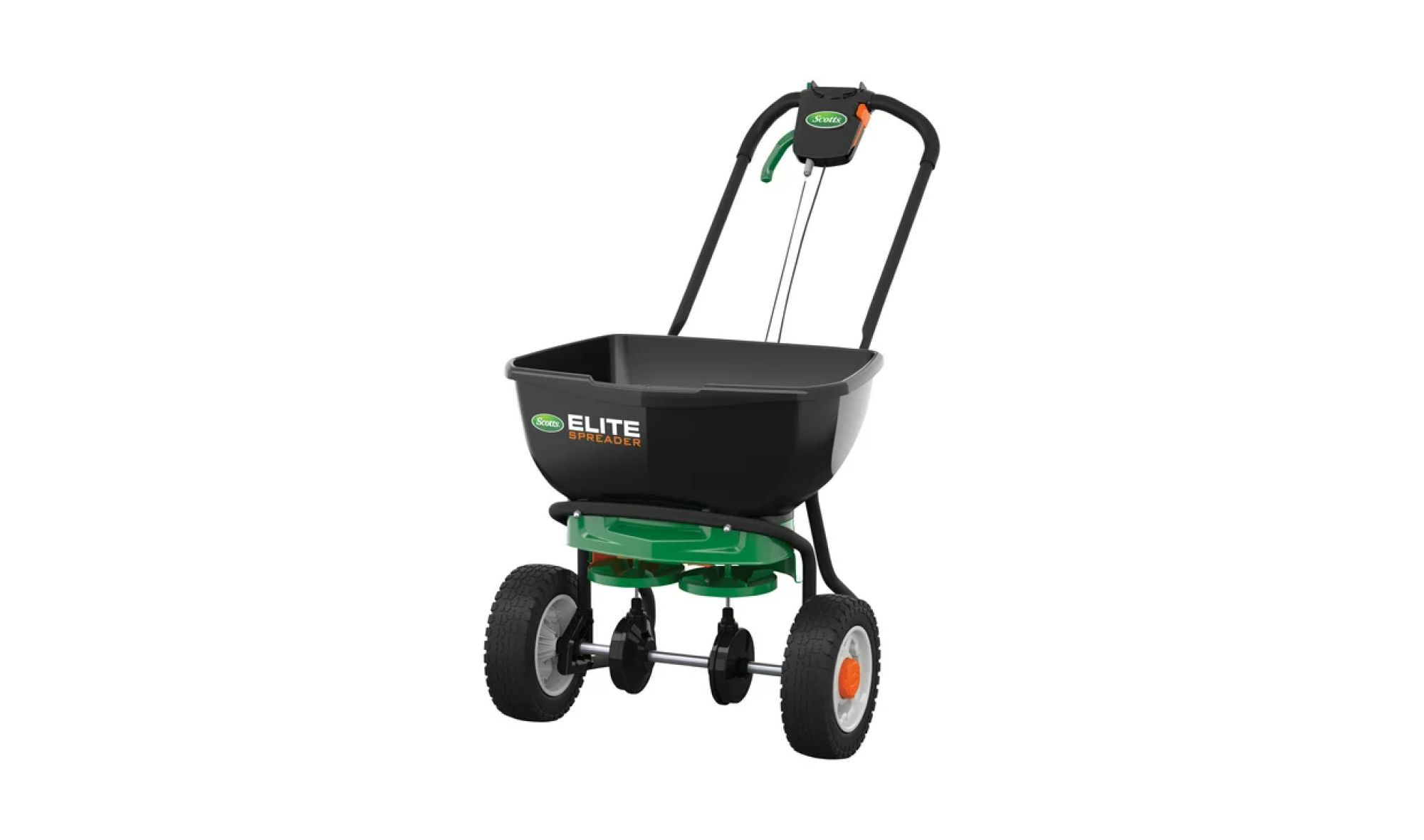
The Scotts Elite Spreader is a versatile tool perfect for extensive yards. With a dual-rotor design, this spreader ensures even and thorough coverage. The spreader also features an integrated edge guard to minimize over-application, helping to distribute your seed or fertilizer accurately. The Scotts Elite Spreader's large capacity hopper can hold up to 150 pounds, covering an impressive 20,000 square feet per application. Beyond its functionality, it's also user-friendly, allowing for easy control during operation.
Earthway Even Spread 2150 Commercial Spreader

The Earthway Even Spread 2150 is a commercial-grade spreader designed for large properties. With a substantial 2150-pound capacity, this spreader can efficiently cover up to 20,000 square feet per application. Its wide spreading pattern ensures even material distribution across your lawn. While it may have a higher price point compared to the Scotts Elite Spreader, the Earthway Even Spread 2150's robust features make it an excellent investment for those with expansive properties.
Scotts Turf Builder EdgeGuard Mini Spreader
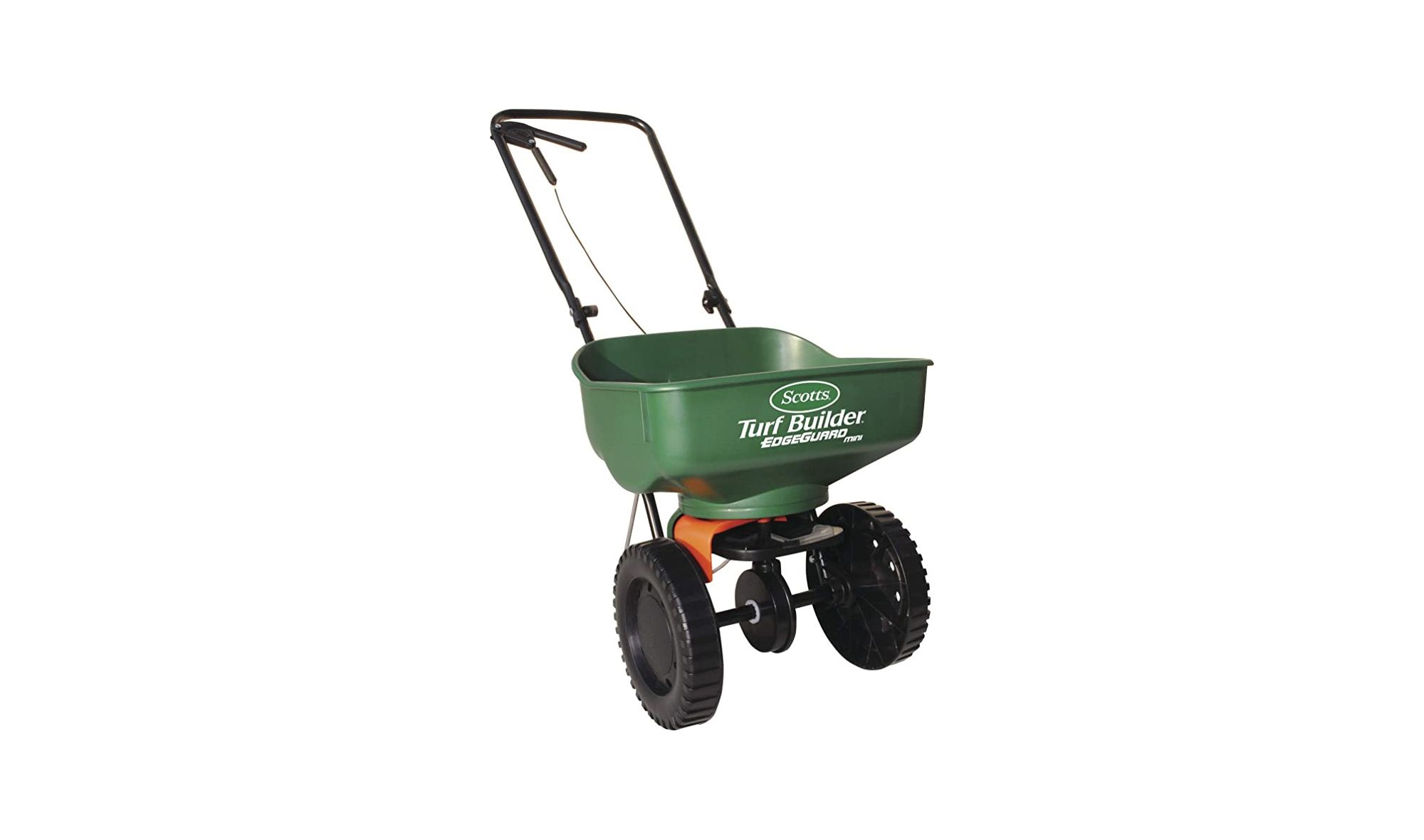
Compact and straightforward, the Scotts Turf Builder EdgeGuard Mini Spreader is perfect for small yards or spot treatments. This handheld spreader offers easy control and features a built-in edge guard to prevent over-application. Despite its small size, this spreader has a capacity of 2 pounds and can cover up to 5,000 square feet per application. Its affordability also makes it an appealing option for those working with smaller lawns or budgets.
Join our newsletter
Stay ahead of the curve in all things outdoor.
Get the inside scoop on the latest landscaping, lawn care, and fencing trends with 1 actionable tip every Saturday morning.
Agri-Fab SmartSpreader 130 lb. Push Spreader

The Agri-Fab SmartSpreader is a heavy-duty push spreader ideally suited for large yards. This spreader can hold up to 130 pounds and offers a coverage of up to 13,000 square feet per application. Its wide spread pattern ensures even coverage, contributing to a consistent and healthy lawn. Although it's more expensive than the Scotts Turf Builder EdgeGuard Mini Spreader, its extensive coverage makes it a smart choice for larger yards.
Brinly-Hardy Tow-Behind Combination Aerator Spreader
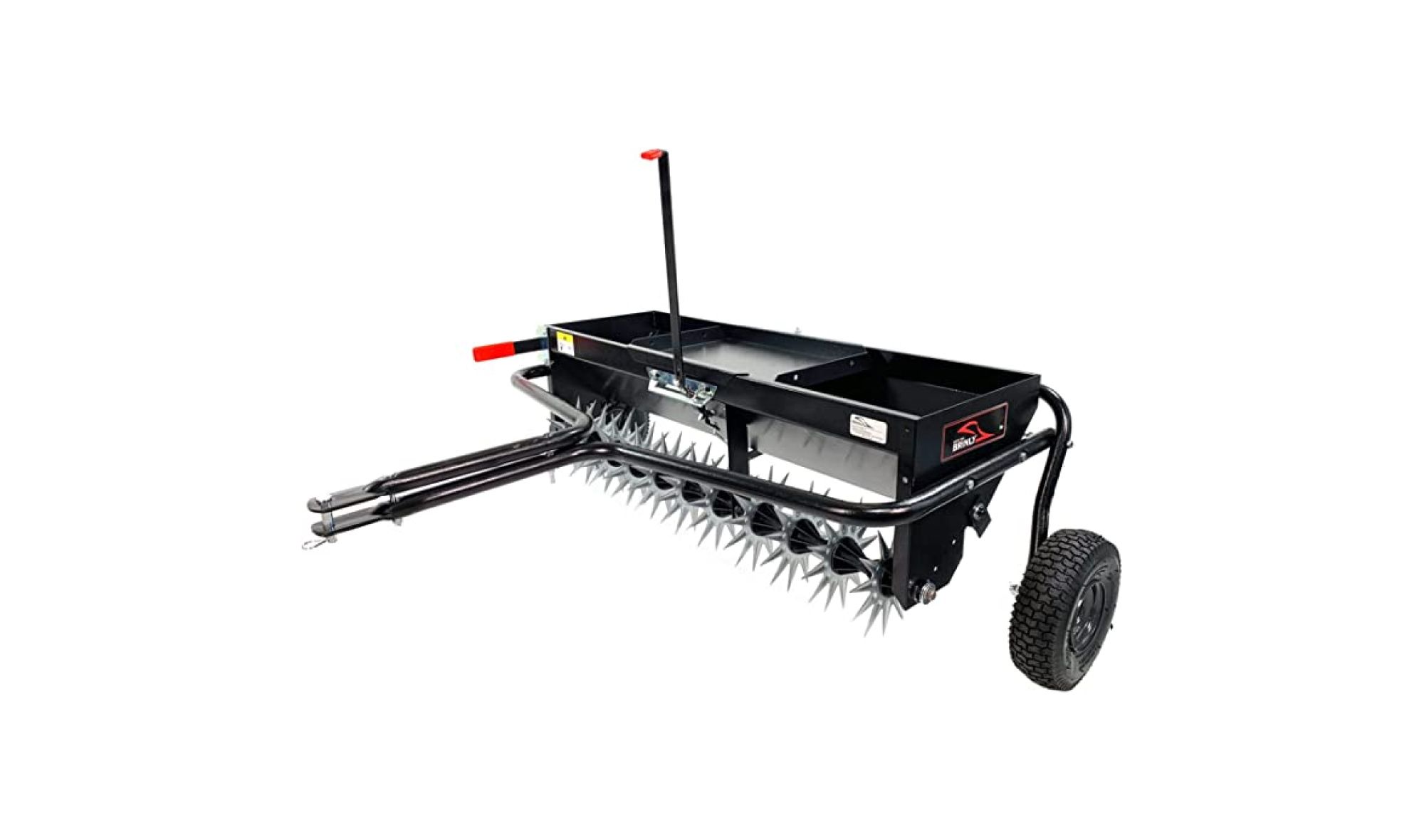
The Brinly-Hardy Tow-Behind Combination Aerator Spreader is a top-of-the-line option that's designed to handle large properties efficiently. Boasting a large capacity of 200 pounds, this spreader can cover an impressive 20,000 square feet per application. As an added bonus, it features a built-in aerator to promote lawn health by ensuring nutrients penetrate the soil. While it's the most expensive option on this list, its dual-functionality and extensive coverage make it a worthy investment for those with large properties.
In conclusion, each of these fertilizer spreaders offers unique features that cater to various lawn sizes and needs. By considering your lawn's specific requirements, you can select a spreader that will best serve you in achieving a lush, vibrant lawn.
Conclusion
Selecting the right spreader is a crucial step in achieving a healthy, lush lawn. Whether you're looking to fertilize or seed your yard, a spreader is an invaluable tool that ensures uniform coverage, promoting even growth and nourishment.
Remember, successful lawn care goes beyond simply choosing the right spreader. Proper use and maintenance, paired with the right materials for your specific lawn, are equally vital. Use your spreader correctly, keep it clean and well-maintained, and your lawn will thank you with lush, vibrant green growth.
In conclusion, investing in a quality spreader can transform your lawn care routine, saving time and improving the health and appearance of your lawn. The models discussed in this post are some of the best in the market, and choosing any of them will be a step in the right direction for your lawn care journey.
Here's to greener lawns and more enjoyable days spent outdoors!
To explore more in-depth tips on achieving the greenest grass and comprehensive lawn care, check out our comprehensive guide to lawn care.
Join our newsletter
Stay ahead of the curve in all things outdoor.
Get the inside scoop on the latest landscaping, lawn care, and fencing trends with 1 actionable tip every Saturday morning.